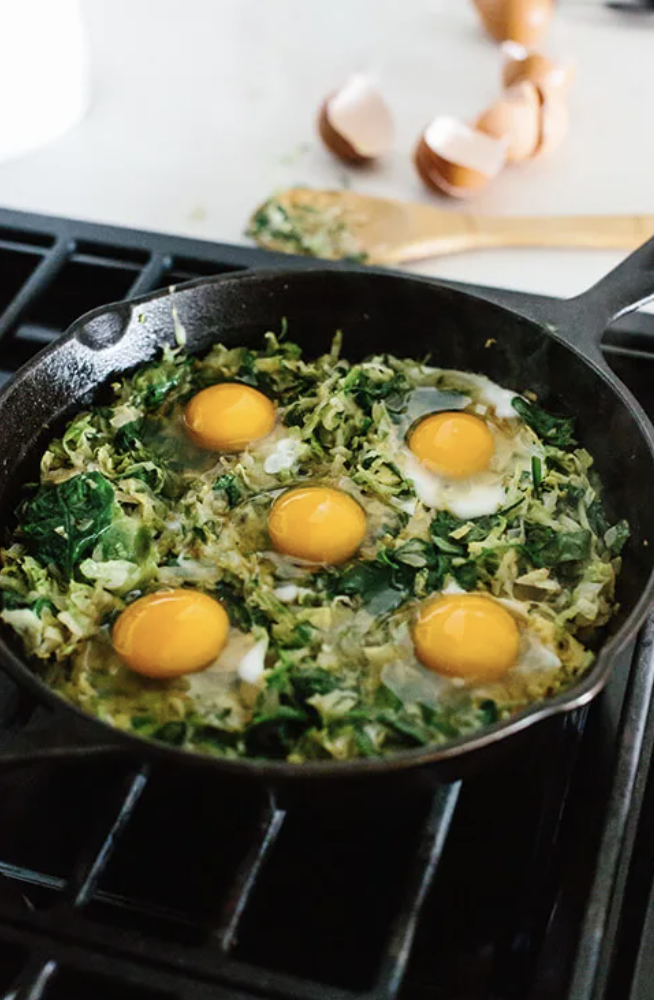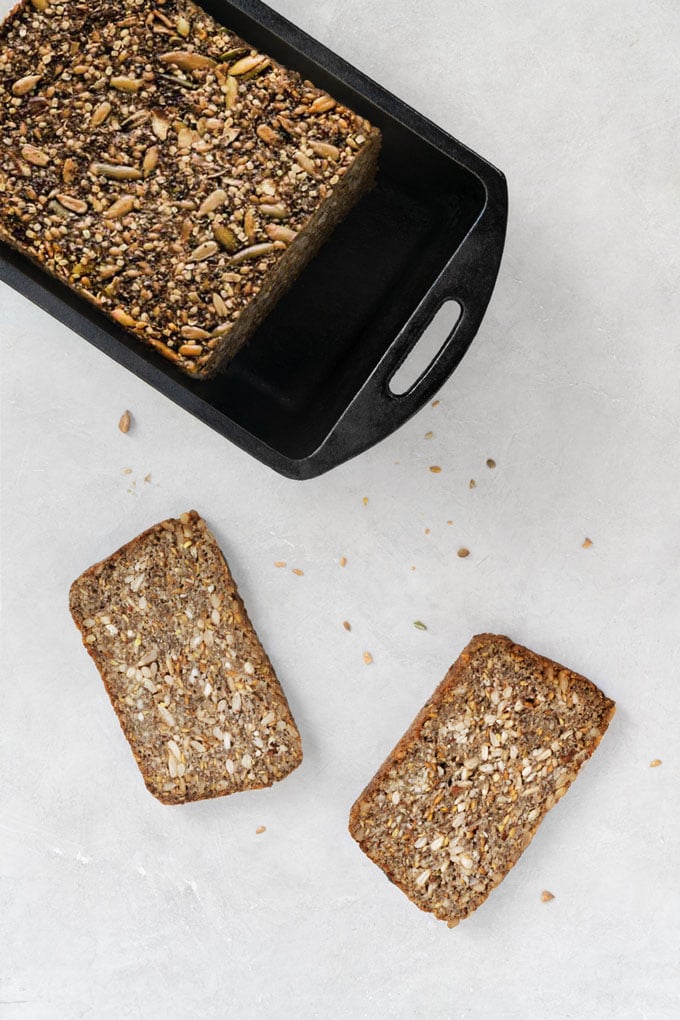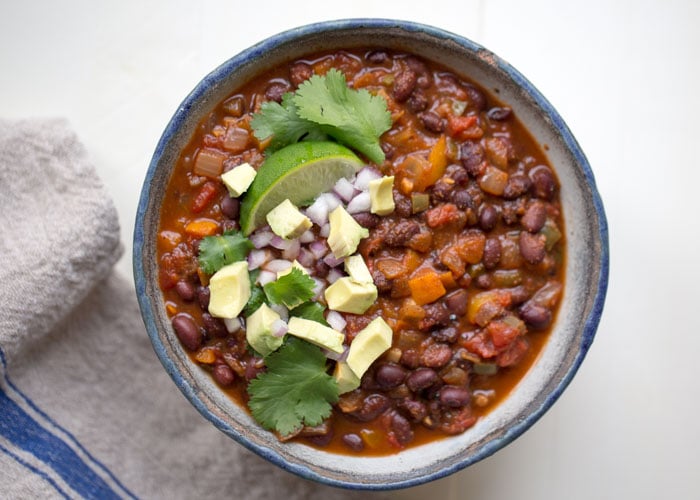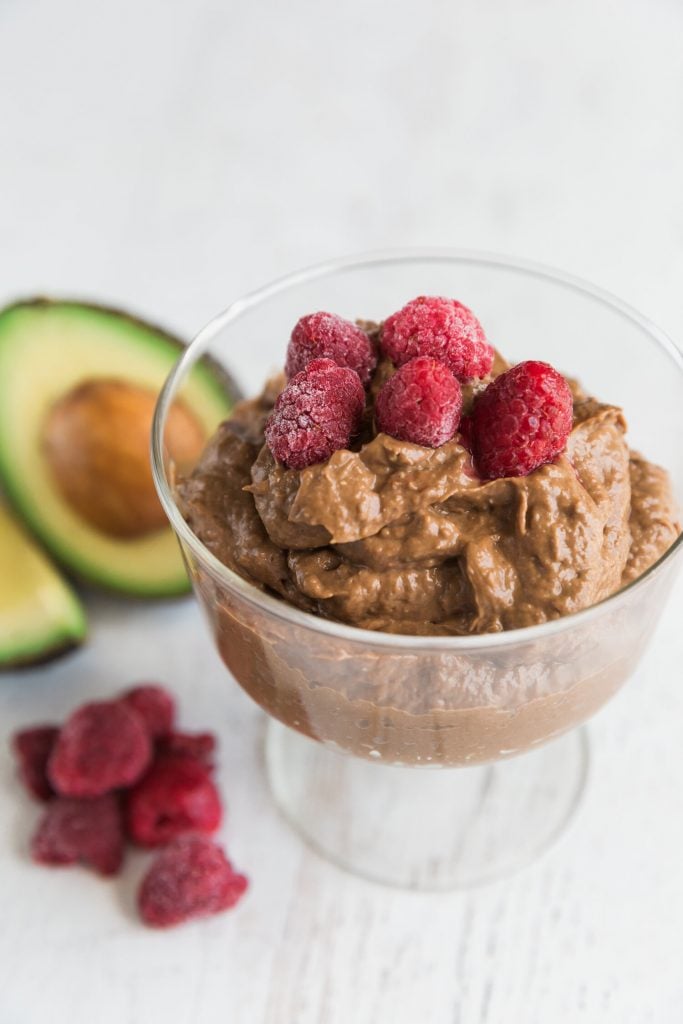Unbeknownst to most of us, we may be walking around with an underlying metabolic issue. We chalk up our mood swings, poor sleep, cravings, and energy dips to “being busy” or “hormones” or “stress.” And while these responses aren’t inherently wrong, there might be something else at play. Dysglycemia. Dysgly—what? In essence, blood sugar instability. This happens when you have really low blood sugar or really high blood sugar, due to chronically mismanaged glucose. Although dysglycemia is a broad term for intense blood sugar swings, it encompasses what experts are now calling the silent epidemic. In today’s article, we’re getting back to the basics. We’re defining what is glucose, why it’s important to have stable glucose, and foods to eat to balance glucose.

What Is Glucose?
Glucose, or blood sugar, is our main source of energy. It’s a type of sugar we get from the foods we eat. From carrots to quinoa, our body uses that sugar for energy. As it travels through our bloodstream to our cells, it’s called blood glucose (or blood sugar). Our bodies break down—or convert—most carbohydrates into glucose. With the help of a hormone called insulin, glucose travels into the cells of the body where it can be used for energy.
How Are Glucose and Insulin Related?
Think of the two as a lock and key. Insulin is the “key” that unlocks a cell’s door. Insulin shuttles blood sugar into cells for energy use. It controls the amount of glucose (in our bloodstream) at any given moment. Produced naturally by the pancreas, insulin is needed to help move glucose from the blood into other parts of the body: Liver, muscles, and more. Without proper insulin function, the body can’t store glucose in our muscles or liver. Last but not least, insulin plays a major role in regulating the body’s metabolism of carbs, fats, and proteins. To say that insulin is important is an understatement.


Why an Insulin Surge Stops Burning Fat
As mentioned, our pancreas creates a hormone called insulin. Insulin is released into the bloodstream to regulate blood sugar. Think of insulin like a trolley. It picks up blood sugar then transfers it into our bloodstream and cells. In turn, this regulates and maintains normal blood sugar levels. Over time, if we constantly eat sugar (or other simple carbs that quickly process into blood sugar), the pancreas goes into overdrive. It has to swiftly produce enough insulin for all of the new blood sugar to be stored. This insulin surge tells our body there is plenty of energy available. In turn, the body stops burning fat, uses the newly available energy, and starts storing fat.
The Difference Between Low and High Blood Sugar
To rewind, what’s the difference between low and high blood sugar? And consequently, how does insulin play a role?
- Low blood sugar (hypoglycemia) occurs when an insulin surge causes too much blood sugar to be transported out of our blood. Some of these symptoms include sweating, hunger, sleepiness, irritability and anxiety. As a result, we crave sugar and carbohydrates. This is a safety mechanism, given that they’re quick sources of energy. In reality, eating these foods starts the cycle all over again. And, in the process, our body stores more fat.
- High blood sugar (hyperglycemia) occurs when the insulin is unable to transport enough blood sugar out of our blood. Some of these symptoms include dry mouth, weakness, frequent urination, headache, and frequent thirst.
When to Talk to Your Doctor About Blood Sugar Issues
Think of these symptoms as warning signs. If you experience them frequently, chat with your doctor or work with a Registered Dietitian to get your blood glucose in check. Unfortunately, these highs and lows can eventually lead to high blood pressure, diabetes, wrinkles, weight gain, and more. Therefore, maintaining a consistent blood sugar level is a key component of optimal health. Luckily, managing your glucose levels isn’t rocket science.


How to Manage Your Glucose Levels
First and foremost, limit simple carbohydrates. Instead, focus on healthy fats (avocados, extra-virgin olive oil, nuts, seeds, etc.), high-quality protein, and fiber-rich meals (leafy greens, cruciferous veggies, and berries are all wonderful sources of fiber). Most importantly, starvation is not the goal. Eating less than your caloric needs increase the production of cortisol (stress hormone) which prevents weight loss, but low blood sugar—due to not eating enough—causes the body to go into muscle-burning mode. In turn, this lowers the efficiency of our metabolism. Not sure if you’re eating enough? Watch this.
Secondly, watch for hidden sugars. Added sugar is in just about every processed food, so be sure to read nutrition labels. As you become more aware, you’ll see there’s added sugar in bread, ketchup, salad dressing, nut butters, and soups. Brands like Primal Kitchen make delicious condiments and dressings without inflammatory oils or added sugars.
There are a variety of other ways to manage your glucose, but exercise is also key. Exercise helps control blood sugar spikes by encouraging insulin sensitivity (a good thing!). Exercise also causes muscle cells to absorb sugar from the blood, helping to naturally lower blood sugar levels. Even moderate-intensity exercise (walking) has been found to reduce blood sugar spikes.
Looking for ways to balance your hormones naturally? Check out this guide.
Normal Range for Blood Glucose
In terms of a normal range for blood sugar/glucose, this will vary from person to person. However, generally speaking, it’s between 80mg/dL and 120 mg/dL. The best experts in the space may even say 110 mg/dL (tested two hours after eating). Other schools of thought may say that anything below 140 mg/ml is considered normal; however, the tighter the window, the better.


The Best Glucose Monitors and How to Track Glucose
When it comes to tracking your glucose, there are a couple of options. You can buy a glucose monitor and use it at home (when this becomes available to the public, I highly recommend!) or get tested at the doctor.
- Random blood sugar test. A blood sample will be taken at a random time. Regardless of when you last ate, a blood sugar level of 200 milligrams per deciliter (mg/dL) or higher suggests diabetes.
- Fasting blood sugar test. A blood sample will be taken after an overnight fast. A fasting blood sugar level less than 100 mg/dL (5.6 mmol/L) is normal. A fasting blood sugar level from 100 to 125 mg/dL (5.6 to 6.9 mmol/L) is considered prediabetes. Anything higher (on two tests) is considered diabetes.
- Oral glucose tolerance test. For this test, you fast overnight. Then, fasting blood sugar level is measured. After, you drink a sugary liquid, and blood sugar levels are tested periodically for the next two hours. A blood sugar level less than 140 mg/dL (7.8 mmol/L) is normal. A reading of more than 200 mg/dL (11.1 mmol/L) after two hours indicates diabetes.
No One Is Perfectly Metabolically Fit
With all of this information in mind, you might be reconsidering the foods you put in your body. That said, remember that no one has perfect blood sugar, and thus, no one is perfectly metabolically fit. Rather than aim for perfection, aim for consistency. For example, try to eat 20-30 grams of protein per meal, two tablespoons of healthy fats, and as many fibrous veggies as you’d like. These general guidelines can help maintain consistently balanced blood sugar.
But, what about that glass of wine and crave-worthy pizza? My two cents: Enjoy! Single events, like a glucose spike from a few slices of pizza, have little effect on long-term outcomes. They’re not worth stressing about. It’s the sum of our daily behaviors—diet, sleep, movement, and stress—that determine our state of health. Our bodies are remarkably adaptable. They know how to use insulin to deal with a glucose spike or antioxidants to fight the not-so-healthy ingredients in a sugary cocktail.
It’s when we repeatedly stress our bodies, day after day, that these systems can become overwhelmed. In turn, they start to break down, leading to insulin resistance and chronic inflammation. Moral of the story: Leave wiggle room to enjoy occasional sweets and simple carbs. Along the way, celebrate all you’re already doing to support your wellbeing.


8 Foods to Eat to Balance Blood Sugar
While this deserves an entire article of its own, there are plenty of foods to eat to balance blood sugar. Following a healthy diet is critical for blood sugar management.
Avocado
Rich in healthy fats, fiber, vitamins, and minerals, adding avocado to meals has been shown to improve blood sugar levels. Numerous studies have found that avocados may help reduce blood sugar levels.
Berries
Berries are loaded with fiber, vitamins, minerals, and antioxidants. They make a wonderful choice for people with blood sugar dysregulation. To make them, even more, blood sugar-friendly, sprinkle them with ground flax or chia seeds or eat them alongside a handful of walnuts or pumpkin seeds. Studies have shown that berries may benefit blood sugar management by enhancing insulin sensitivity and improving glucose clearance from the blood.
Broccoli
Sulforaphane, present in broccoli (and broccoli sprouts) is a type of isothiocyanate that has blood-sugar-reducing properties.
Fatty Fish
A high intake of fatty fish, like wild-caught salmon, and sardines have been shown to help improve blood sugar regulation.
Pumpkin (Pumpkin Seeds)
Packed with fiber and antioxidants, pumpkin is helpful for blood sugar regulation. In fact, pumpkin is used as a traditional diabetic remedy in many countries like Mexico and Iran. Furthermore, pumpkin seeds are packed with healthy fats and proteins, making them an excellent choice for blood sugar control as well.
Flax Seeds
Rich in healthy fats and fiber, flax seeds are a nutritional powerhouse. Chia seeds, too! They may help reduce blood sugar levels. Particularly, whole flax seeds. Sprinkle them on top of Greek yogurt, mix them into smoothies, or toss them onto salads.
Beans
Both beans and lentils are rich in a variety of nutrients, such as magnesium, fiber, and protein. All of these can help lower blood sugar. They’re particularly high in soluble fiber and resistant starch, which help slow digestion and may improve blood sugar response after meals.
Kimchi
Fermented foods, like kimchi and sauerkraut, are packed with nutrient compounds, including probiotics, minerals, and antioxidants. Eating them has been linked with improved blood sugar and insulin sensitivity.
5 Blood Sugar Friendly-Recipes
Green Shakshuka by Downshiftology
Putting a healthy spin on classic shakshuka, this version is packed with fiber-rich greens, healthy fats, and high-quality protein (eggs) t0 keep blood sugar balanced.


Nut And Seed Bread by Nutrition Refined
Chewy, nutty, hearty, and filling, this bread is loaded with nuts and seeds to balance blood sugar. Pair it with eggs, avocado, and grass-fed butter for a blood sugar-friendly meal.


Slow Baked Citrus Salmon by Camille Styles
You may never make salmon another way again. Containing protein and healthy fats, this high-quality protein is key for blood sugar management. Pair this entree with sauteed zucchini and brown rice for a delicious, healthy dinner.


Vegan Black Bean Chili by Kitchen Treaty
With less than 10 ingredients, this hearty, fiber-packed chili comes together in no time. It might be fast and simple, but thanks to the magic of pressure cooking, it tastes like it simmered all day. Top with organic cheese (vegan or not) or avocado to keep glucose levels balanced.


Dark Chocolate Avocado Mousse by Be Well By Kelly
There are plenty of ways to satisfy your sweet tooth without spiking blood sugar! This creamy, chocolatey mousse is the answer. Although it tastes decadent, it’s packed with health fats, fiber, and protein. This dessert easily passes as breakfast. You’ll always want some on hand.







